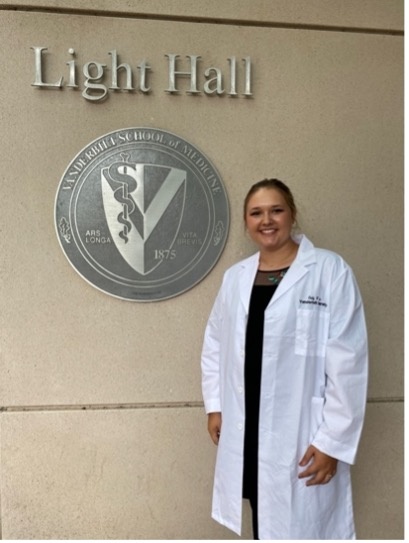Imagine a world where infections that are currently viewed as minor were deadly, where your parent died from a burn that became infected with Staphylococcus aureus, or your friend lay suffering beside you on the battlefield with sepsis as you fought for the freedom of millions of wrongfully mistreated people. This world is not so far away or so distant in the past . While some parts of the world sadly still struggle with this, billions of people across the globe benefit annually from antibiotic treatment of formerly deadly, pathogenic infections. As Dr. Jim Cassat details in the lecture “In Case of Emergency: Bring Antibiotics!” the discovery of antibiotics is attributed to the research of many great scientists, a few accidents, and remains a current concern in the field of modern biomedical science.
The birth of clinical antibiotics is largely attributed to Sir Alexander Fleming who discovered penicillin after neglecting plates in the lab during the summer of 1928. Upon returning to the lab in the fall, he discovered a mold on the agar plates he had used months prior and began investigating the organism. Following his studies into the mold Penicillium notatum, Fleming published his findings a year later. While Fleming’s discovery would go on to spur a radical change in clinical microbiology, he was not the first to describe antibiotics, nor the reason for the change in production scaling that would lead to penicillin’s clinical relevance, as stressed by Dr. Cassat.
By 1945, penicillin ushered in the “Golden Age of Antibiotics” thanks to three English scientists- Howard Florey, Norman Heatley, and Ernst Chain, who worked to purify and amplify production of penicillin, thus allowing it to be produced in clinically relevant quantities for use during World War II (1). Fleming, Florey, and Chain were awarded a Nobel Prize in 1945, seventeen years after penicillin was first discovered. In his Nobel lecture, Fleming recognized and warned of the danger of widespread antibiotic use:
“It is not difficult to make microbes resistant to penicillin in the laboratory by exposing them to concentrations not sufficient to kill them, and the same thing has occasionally happened in the body. The time may come when penicillin can be bought by anyone in the shops. Then there is the danger that the ignorant man may easily underdose himself and by exposing his microbes to non-lethal quantities of the drug make them resistant.” (2).
Fleming’s warning may have been issued the better part of a century ago, but the very words he spoke resonate the urgency of current clinical antibiotic resistance. In 2019, some U.S. states exceeded 920 antibiotic courses prescribed per 1,000 patients in clinics alone (3). Other countries such as India have unregulated antibiotics available without prescription, and agriculture across the globe has leveraged antibiotics to produce more food per acre/head. Together, the world faces an ever-increasing health threat. The CDC reports that as of 2021, 2.8 million antibiotic resistant infections occur annually in the U.S. (4). Antibiotic use must be decreased and appropriated in an effort to alleviate selective pressures on bacterial populations and decrease the evolution of antibiotic resistance. This is an ever-growing issue considering that pharmaceutical companies are moving away from antibiotic production due to hospitals reserving new compounds for the most dire of cases, according to Dr. Cassat. In combination with a decrease in antibiotic discovery and production, the world faces a clinical crisis. If we continue to ignore Fleming’s warning, will we force ourselves to return to a near pre-antibiotic world?
References:
- Quinn R. (2013). Rethinking antibiotic research and development: World War II and the penicillin collaborative. American journal of public health, 103(3), 426–434. https://doi.org/10.2105/AJPH.2012.300693
- Sir Alexander Fleming. (1945). Nobel Lecture. NobelPrize.org. Nobel Prize Outreach AB 2022. https://www.nobelprize.org/prizes/medicine/1945/fleming/lecture
- Centers for Disease Control and Prevention. (2021, November 1). Current report. Centers for Disease Control and Prevention. Retrieved February2022, from https://www.cdc.gov/antibiotic-use/stewardship-report/current.html
- Centers for Disease Control and Prevention. (2021, November 23). Tracking antibiotic resistance. Centers for Disease Control and Prevention. Retrieved February 2022, from https://www.cdc.gov/drugresistance/tracking.html
